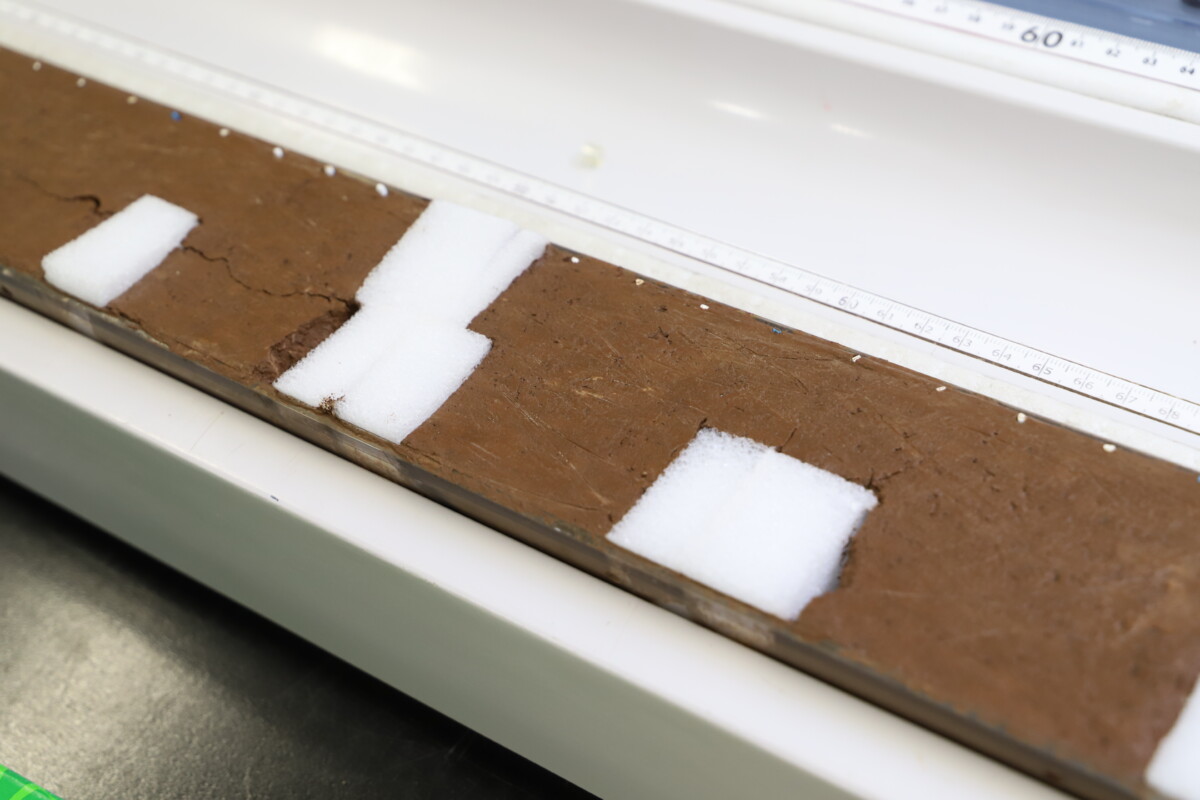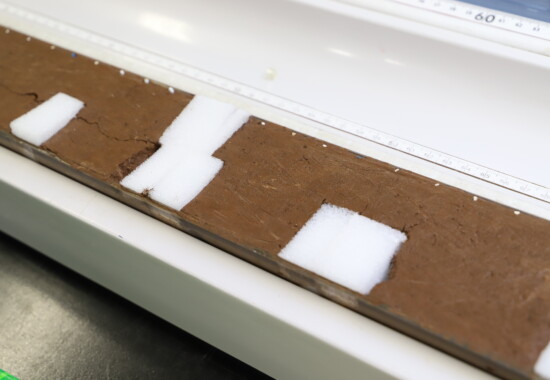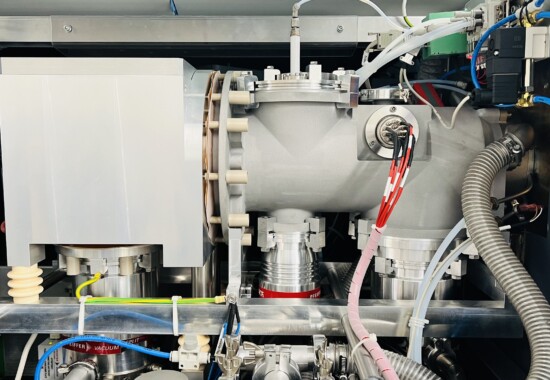レアアース泥発見論文 Paper reporting discovery of REY-rich mud
最初の論文紹介は、すべての始まりの論文であり、太平洋にレアアース泥が大量に存在することを初めて報告した論文「Deep-sea mud in the Pacific Ocean as a potential resource for rare-earth elements https://rdcu.be/cOq0J」を紹介します。I firstly introduce the article reporting the discovery of REY-rich mud in the entire Pacific Ocean “Deep-sea mud in the Pacific Ocean as a potential resource for rare-earth elements https://rdcu.be/cOq0J“.
地球の海底には、様々な種類の泥(堆積物)が積もっています。この堆積物は、地球環境や海の進化の歴史を研究するのに非常に有用なため、国際海底掘削プロジェクトによって、海底の様々な場所で堆積物が採取され、長年にわたって多くの研究者に提供されてきました。The Earth’s seafloor is covered with various types of mud (sediment). Because this sediment is very useful for studying the Earth’s environment and the evolutionary history of the ocean, sediments have been collected at various locations on the seafloor by international seafloor drilling projects and made available to many researchers over the years.

This is an example of a sediment sample collected during a research cruise by Japan Agency for Marine-Earth Science and Technology. It was collected with a cylindrical instrument, which was then split in half on a shield. The texture is like “miso”. Image: Taken at the Kochi Core Center, Japan Agency for Marine-Earth Science and Technology (Photographer: Junichiro Ohta)
この論文は、太平洋全域の78ヶ所、全部で2000個以上の堆積物試料の化学分析を行って、レアアースの濃度を含む元素濃度を把握したというものです。その結果として、レアアースを高濃度で含む堆積物が広大な範囲で存在していることがわかりました。特に、ハワイ沖やタヒチ沖が、高品位なレアアース泥が分厚く堆積している有望海域として報告されました。This paper describes elemental concentrations, including concentrations of rare earth elements, of more than 2,000 sediment samples from 78 sites throughout the Pacific Ocean. The results show that sediments containing high concentrations of rare earth elements are present over a vast area. In particular, the areas off Hawaii and Tahiti were reported as promising areas with thick deposits of high-grade REY-rich mud.
ちなみに私は、この時に卒論生としてハワイ沖の堆積物の分析を担当し、この論文の共著者に名を連ねることになりました。これが私にとって、初めて自分の名前が世に出た瞬間であり、私が研究者となる本当の第一歩となった瞬間でもありました。At this time, I was in charge of analyzing the sediments off the coast of Hawaii for my graduation thesis and was named as a co-author of this paper. This was the first time for me to get my name out there, and the first real step in my career as a researcher.
堆積物のレアアース濃度というのは、実はかなり昔から少しずつ研究され、報告されてきました。しかし、この論文の研究のすごいところは、太平洋全域を網羅したこと、そして最も重要なことは、The concentration of rare earth elements in sediments have actually been studied and reported for a long time, but the most inovative things about this paper’s study is that it covers the entire Pacific Ocean, and most importantly,
ただの泥だと思われていたものが、未来を変えるほどのポテンシャルをもつ資源である。What was thought to be just mud is a resource with the potential to change the future.
というパラダイムシフトを起こしたことです。しかも、その資源量は人類には使い切れないほど膨大、海底面のすぐ近くにあるため探査が簡単、レアアースを薄い酸ですぐに抽出できる、開発の障害となる放射性元素をほとんど含まない、泥を吸い上げるだけで採掘できるため環境負荷が非常に小さい、といった特長をいくつも併せ持っています。This has caused a paradigm shift in the world. Moreover, the resource is so vast that humans cannot use it up, exploration is easy because it exists close to the seafloor, rare earth elements can be quickly extracted with diluted acid, it contains almost no radioactive elements that would hinder development, and it has a very low environmental impact because it can be mined simply by sucking up the mud.
このような社会に多大なインパクトを与えうるポテンシャルをもつため、私や私の所属研究室は、レアアース泥で未来を変えるため、研究にまい進することになりました。Because of this potential to have a tremendous impact on society, my laboratory and I are committed to research in order to change the future with this REY-rich mud.
実はこの2011年の時点では、レアアース泥がレアアースを濃集するメカニズムはまだあまりよくわかっていませんでした。それについては、また別の機会にご紹介します。次回の論文紹介では、この論文がいかに革新的であったかを、もう少し掘り下げてお話ししたいと思います。In fact, at this time in 2011, the mechanism by which the REY-rich mud concentrate rare earth elements was still not very well understood. I will discuss that at another time. In my next paper review, I would like to talk a little more in depth about how innovative this paper was.
<書誌情報 paper information>
Yasuhiro Kato, Koichiro Fujinaga, Kentaro Nakamura, Yutaro Takaya, Kenichi Kitamura, Junichiro Ohta, Ryuichi Toda, Takuya Nakashima & Hikaru Iwamori. Deep-sea mud in the Pacific Ocean as a potential resource for rare-earth elements. Nature Geoscience 4, 535–539 (2011). https://rdcu.be/cOq0J


